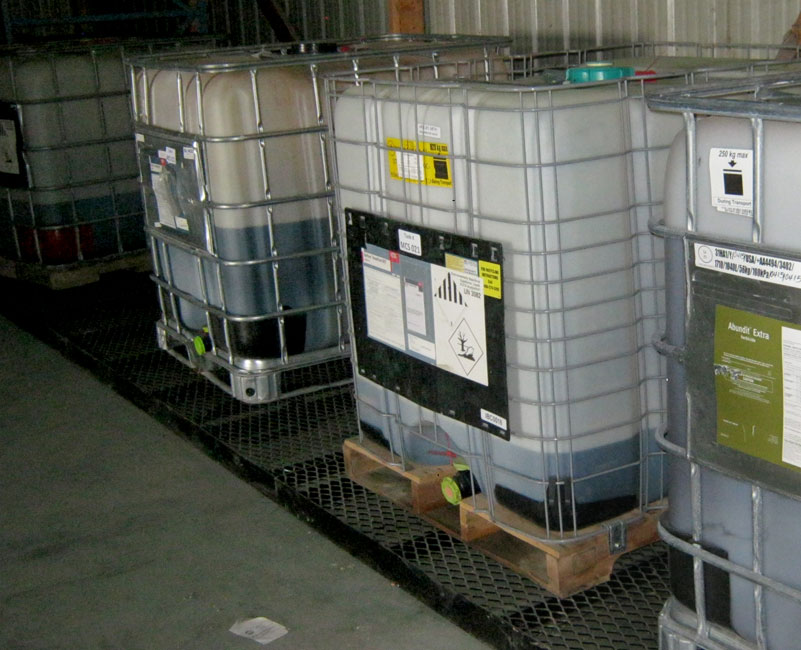Minnesota farmers, educational institutions, individuals at educational institutions, and nonprofit organizations interested in researching sustainable agriculture practices and systems can now apply for funding through the Minnesota Department of Agriculture (MDA).
The Agricultural Growth, Research, and Innovation (AGRI) Sustainable Agriculture Demonstration Grant Program funds innovative projects that explore the energy efficiency, environmental benefits, or profitability of sustainable agricultural techniques or systems, from production through marketing. The MDA will award up to $350,000 in grants using a competitive review process.
Applicants may request up to $50,000 per project. The first $25,000 does not need to be matched by the applicants. For requests between $25,000 and $50,000, applicants must provide a dollar-for-dollar match on the amount above $25,000.
Past grants have funded a wide range of projects, such as exploring cover crops and crop rotation; conservation tillage; input reduction strategies; integrated pest management; and alternative energies such as wind, methane, and biomass.
Projects may last two to three years and need to take place on Minnesota farms, and grantees must be willing to share what they learn with others. Grant projects are published annually in the MDA’s Greenbook, which provides a summary of each project along with results, management tips, locations of previous projects, and other resources.
Funding for this program is made available through the AGRI Program, which administers grants to farmers, agribusinesses, schools, and more throughout the state of Minnesota. The AGRI Program exists to advance Minnesota’s agricultural and renewable energy sectors.
Applications will be accepted through 4 p.m. on Thursday, December 7, 2023, and funding will be awarded in early 2024. For more information and application details, visit the AGRI Sustainable Agriculture Demonstration Grant webpage.
###
Media Contact
Logan Schumacher, MDA Communications
651-201-6193
Logan.Schumacher@state.mn.us
Congratulations! You’ve been awarded the AGRI Sustainable Agriculture Demonstration Grant (SustAg).
1. Mini-bulk tanks that contain pesticides must be stored in secondary containment.
2. The capacity of the secondary containment area must be a minimum of 110% (roofed storage) or 125% (unroofed storage) of the largest mini-bulk container in the containment area. Displacement of other tanks must also be calculated as well.
3. Elevating mini-bulk tanks on metal stands or pallets equal to the height of the containment wall will eliminate any displacement volume and will ease access to mini-bulks in the containment area.
4. All mini-bulk tanks must be placed a minimum of one foot from the secondary containment wall or curb.
5. The secondary containment may not contain a drain or other similar opening. If such an opening exists it must be permanently plugged to prevent an incident.

1. Mini-bulk tanks that contain pesticides must be stored in secondary containment.
2. The capacity of the secondary containment area must be a minimum of 110% (roofed storage) or 125% (unroofed storage) of the largest mini-bulk container in the containment area. Displacement of other tanks must also be calculated as well.
3. Elevating mini-bulk tanks on metal stands or pallets equal to the height of the containment wall will eliminate any displacement volume and will ease access to mini-bulks in the containment area.
4. All mini-bulk tanks must be placed a minimum of one foot from the secondary containment wall or curb.
5. The secondary containment may not contain a drain or other similar opening. If such an opening exists it must be permanently plugged to prevent an incident.

Secondary containment for mini-bulk tanks do not have to be permitted prior to construction but must meet all requirements of the rule. (See the MDA fact sheet Pesticide Storage - Bulk Requirements.) If you are constructing a mini-bulk tank containment area and have plans to permit containment for 500 gallons tanks or larger in the future, the MDA strongly recommends that you submit the plans for review to ensure permit compliance prior to construction.
The MDA will review your construction plans upon request, but this is not required. However, if the containment is found to be inadequate, you must reconstruct to meet the rule.
Secondary containment for mini-bulk tanks do not have to be permitted prior to construction but must meet all requirements of the rule. (See the MDA fact sheet Pesticide Storage - Bulk Requirements.) If you are constructing a mini-bulk tank containment area and have plans to permit containment for 500 gallons tanks or larger in the future, the MDA strongly recommends that you submit the plans for review to ensure permit compliance prior to construction.
The MDA will review your construction plans upon request, but this is not required. However, if the containment is found to be inadequate, you must reconstruct to meet the rule.
1. Anytime liquid bulk pesticides are transferred from a mini-bulk container for the purpose of impregnating fertilizer, filling application equipment for filling another bulk container a load area is required.
2. Load areas for liquid bulk pesticide transfers must have a minimum 3 inch high curb regardless of the size. It must be constructed of concrete, metal, or other materials that are deemed compatible to pesticides by MDA during permit review.
3. Facilities storing mini-bulk tanks of a rated capacity of 250 to 499 U.S. gallons must have a load area with a minimum capacity of 500 U.S. gallons.
4. Facilities storing mini-bulk tanks of a rated capacity of 56 to 249 U.S. gallons must have a load area with a minimum capacity of 250 U.S. gallons.
5. If a sump is constructed in the load area it must comply with Minnesota Rules 1505.3070.
6. Load areas must be properly maintained. Cracks must be repaired as needed and remain liquid tight.
7. Load areas for dry bulk pesticide transfers do not require a 3 inch high curb but do require a load area constructed of impervious materials and must be elevated above the ground level.

